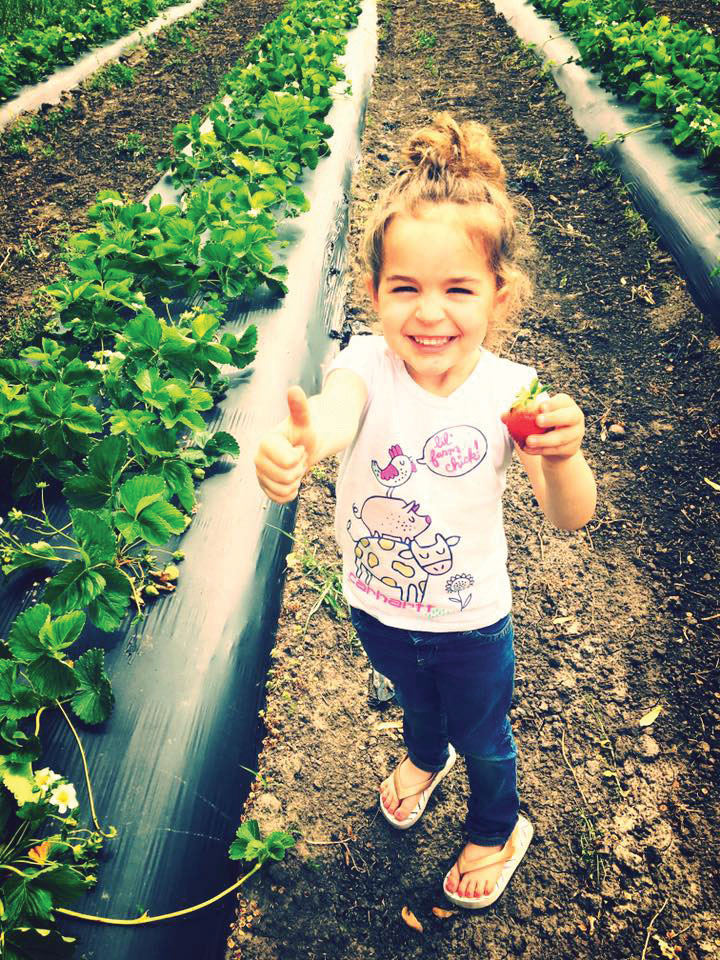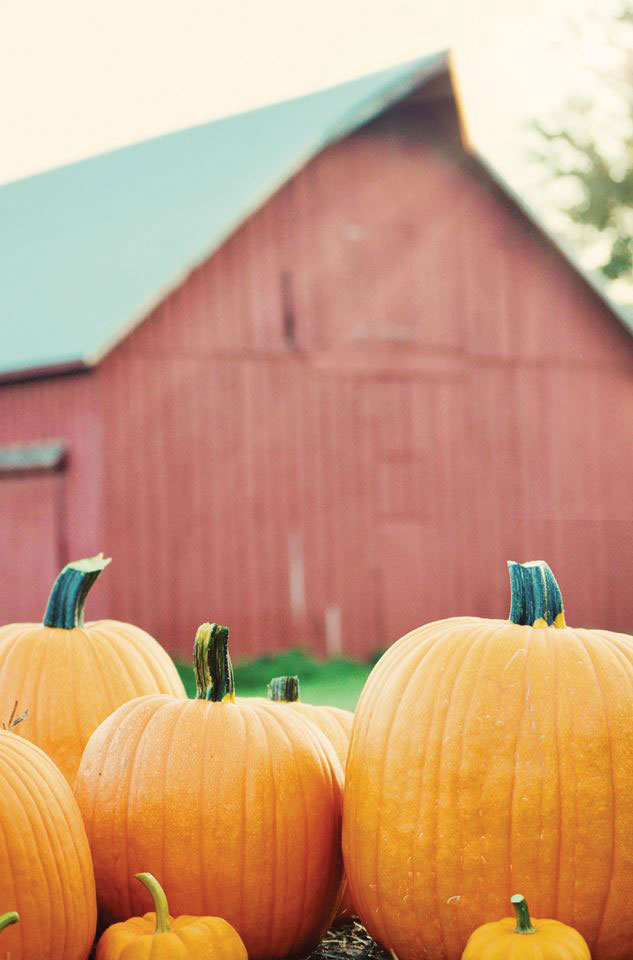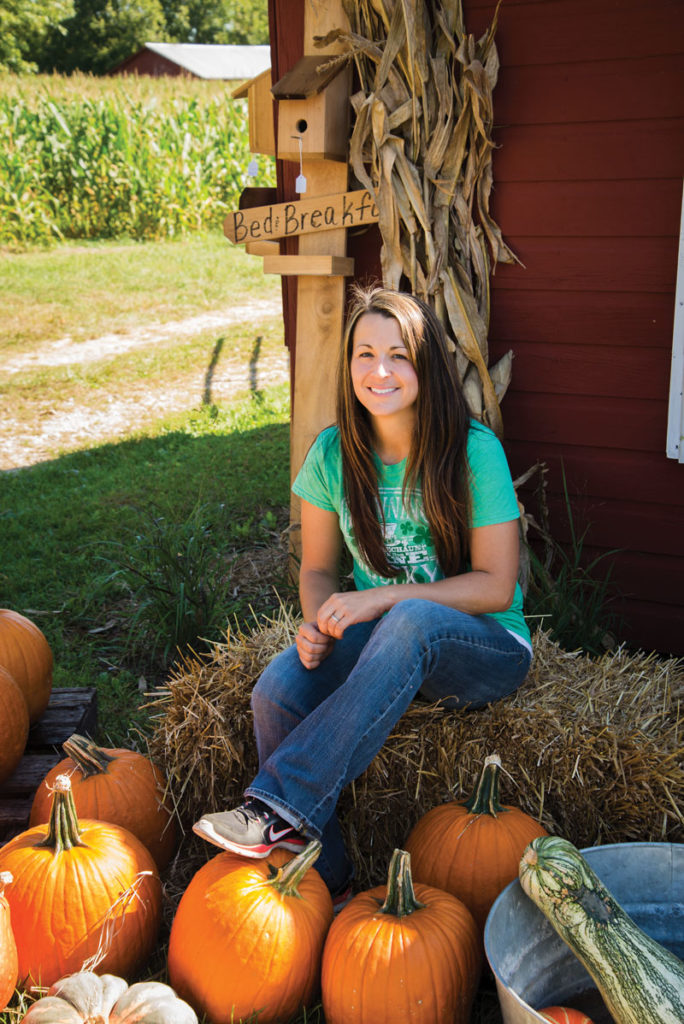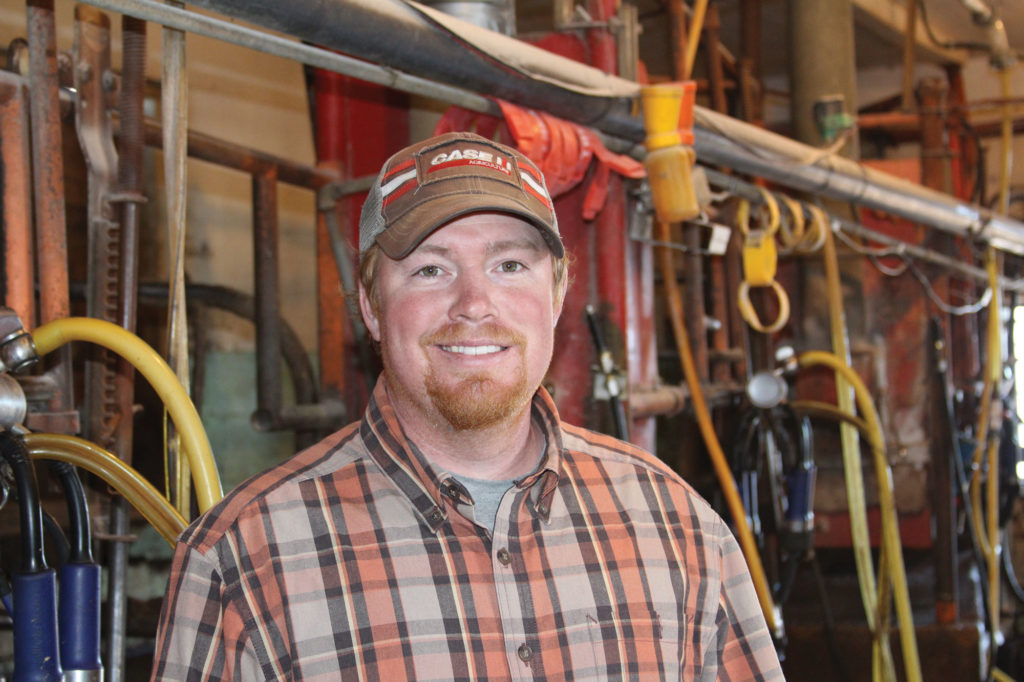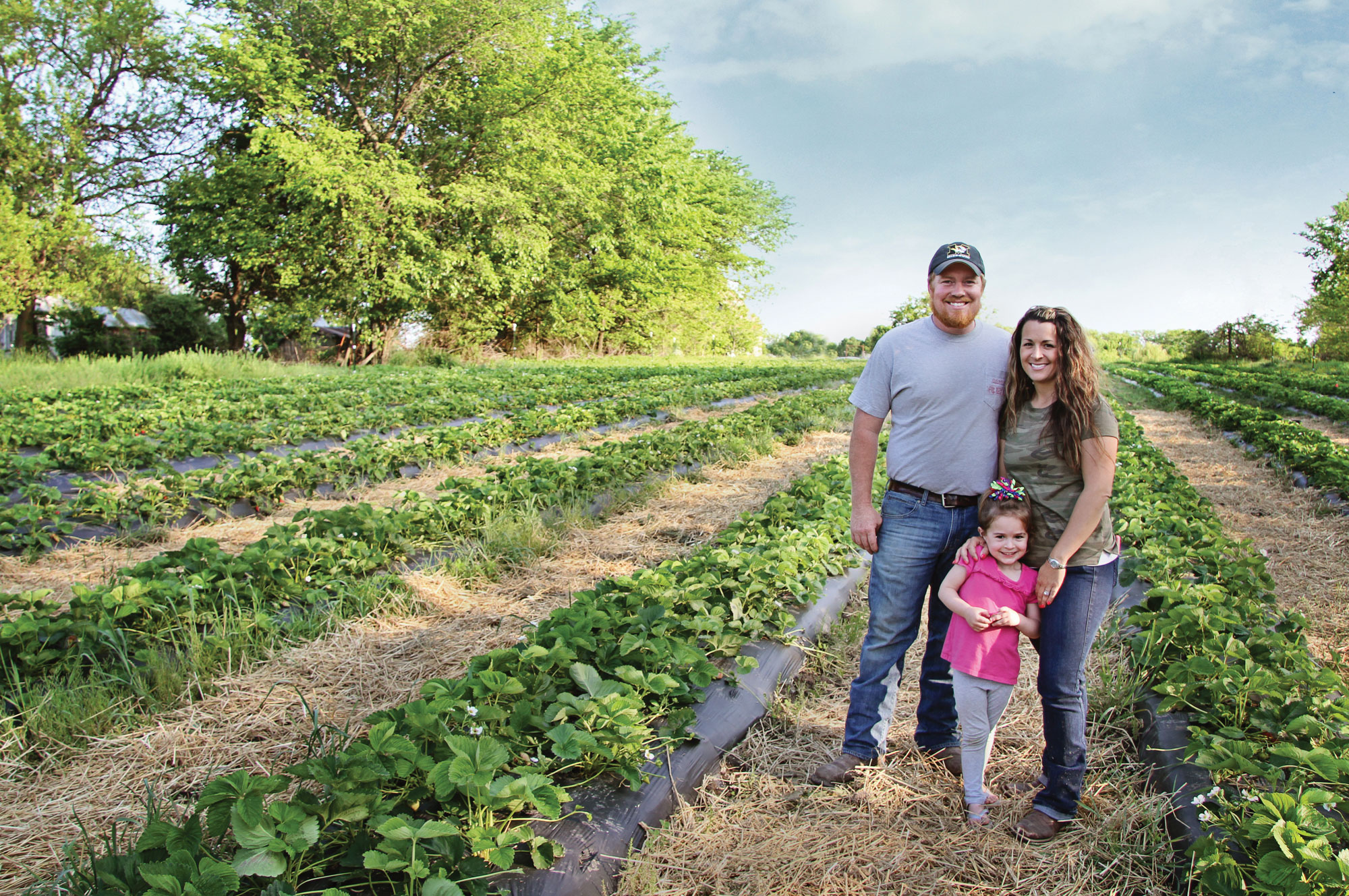
Thinking Outside the Row Crop
May 12, 2017
Written By Adam Buckallew
New Ventures Mean New Revenue for Moreland Family
Matt Moreland never dreamed pumpkins would have a place on his farm. He grew up raising dairy and beef cattle, corn, and soybeans with his father and uncle. Pumpkins did not even register on the list of possibilities.
Now, pumpkins, strawberries and a swiftly growing agritourism business stand front and center for Red Barn Ranch, the farm Moreland, 31, owns with his wife, Becky, in Harrisonville, Mo.
“It is amazing how a decision to plant pumpkins in a hayfield has changed so much for us,” Matt says. “The pumpkin patch was really an afterthought, but it’s working, it’s profitable and we see almost limitless potential for it.”
Profitable Pumpkins
The idea to grow pumpkins took root when Becky attended a class about pumpkins at a young farmers and ranchers conference in 2012.
“I heard pumpkins were easy to grow, and I talked Matt into trying it,” Becky says. “Unfortunately, it wasn’t quite as easy as we thought it would be. The first year was rough.”
Though Matt had grown corn and soybeans for years and had some involvement in his family’s garden, he was a relative novice with regard to pumpkins.
“I didn’t know anything about pumpkins, but I thought I could probably wing it,” Matt recalls. “Our first pumpkin crop was a miserable failure, and I told Becky I’d never plant pumpkins again.”
When the Morelands moved onto a new farm in 2013, Becky saw the three acres of pasture behind their house, and she began to think of how to put it to best use.
“I asked Matt, ‘Isn’t there something else we could do with that land that would be more profitable than the two round bales worth of hay it would produce?’” Becky says. “Round bales were only selling for about $45 a piece at the time, and I thought we could do better if we tried planting something different.”
Matt’s intention was to plant the field with corn or soybeans, but Becky asked him to give pumpkins another try. Matt tried reminding Becky he was done with pumpkins, but this was not an argument he would win.
Armed with the lessons he learned from his failed first attempt, Matt knew he needed to give the pumpkin patch more attention and care if he wanted to do anything more than waste his time. The extra effort paid off with a field full of pumpkins.
Becky took the lead from there and set up a Facebook page to help market the pumpkins. The page became popular almost instantly.
“We had 575 likes on our page overnight,” Matt says. “It blew my mind. Then we started getting questions about what activities we would have for kids, and I told Becky, ‘Picking pumpkins is the activity,’ but that didn’t fly.”
Though they had not anticipated needing to develop activities, Matt managed to come up with a number of ideas to entertain visiting children in the few days left before Red Barn Ranch was set to open to the public. He set up a corn pit (like a sandbox, but with corn kernels), a hay tunnel, pumpkin bowling and pumpkin tic-tac-toe games. A corn maze and model milking cow were added in subsequent seasons.
Flash forward to the present and Red Barn Ranch has eclipsed all of Matt and Becky’s expectations. It has become a profitable contributor to their farm, and they believe they have only scratched the surface of its potential.
“We had close to 4,000 visitors last year, and our attendance has grown every year,” Matt says. “We are expanding our parking areas this spring because we were running out of places to park people.”
Embracing Agritourism
While Matt is now enthusiastic about the pumpkin patch and the agritourism opportunities it has opened up, he admits he was not originally excited about the extra chores it added to his workload.
“Most farmers don’t want to deal with any extra hassles, but you cannot deny there is strong interest from the public for this type of thing,” Matt says.
Perhaps the most enticing part of the agritourism operation is its non-reliance on traditional commodity markets.
“Agritourism has added another revenue stream to our farm, and it has helped us diversify our operation,” Becky says. “This has really helped us supplement farm income at a time when commodity prices are low and inputs are high.”
Matt and Becky’s success hasn’t stopped them from continuing to improve Red Barn Ranch. They’ve kept busy with adding new projects even as their family has grown to include their four-year-old daughter, Kinze, and three-month-old son, Oliver. They are always looking for new ways to improve their guests’ experience and give people more reasons to come back to the farm.
“We’ve reinvested close to 100 percent of the money we’ve earned from the pumpkin patch,” Matt says. “Our goal is to keep growing this business to the point it can replace Becky’s income from her job in real estate. We’re not there yet, but we are getting close to that point.”
To meet the growing demands of their customers, Matt and Becky devoted a second field to pumpkins, bringing the total pumpkin acreage to 10. They also added a strawberry patch with 24,000 plants in 2015. They harvested their first strawberry crop last spring and plan to add more strawberry plants in the future.
In addition to the pumpkins, strawberries and activities, Becky opened a general store in an old milking barn on the Moreland’s property to sell crafts and farm-fresh foods. Becky is also interested in the possibility of adding a U-Pick flower garden and honey bees to the farm.
Though growing their agritourism operation is a priority, Matt has had to balance Red Barn Ranch work with his responsibilities to Moreland Farms, the family farm managed by his father, Mike Moreland, and uncle, Jay Moreland. Matt has been working full-time for Mike and Jay since he returned from college nearly 10 years ago. Moreland Farms consists of a 150-cow dairy, a herd of 500 replacement dairy heifers and steers, 80 Angus cross beef cow-calf pairs and more than 1,000 acres of row-crop and hay production.
“My family has been supportive of what Becky and I are doing with Red Barn Ranch,” Matt says. “But it’s definitely been a challenge. Our busiest times for the pumpkins and strawberries overlap with harvest and planting season for our row crops. I know my dad and uncle usually aren’t super thrilled when I say, ‘Hey, I know I should be in a tractor planting, but I’ve got to go sell strawberries,’ or ‘I know it’s harvest time, but I’ve got a bus full of people coming to the farm for a tour.’ They haven’t fired me yet, so I guess it’s going okay from their perspective.”
Due to the constraints on Matt’s time, he and Becky are looking at possibilities beyond crops to continue to grow their Red Barn Ranch business.
The Next Big Thing
When Matt was a senior at the University of Missouri, he took a class called Returning to the Farm. As part of the class, Matt was required to develop a plan to make his family’s farm more profitable. Matt came up with an idea to build a barn for hosting events, like weddings. He developed a full business plan detailing all aspects of such an operation and submitted it to a panel of professors for review. The panel ranked Matt’s proposal as the most feasible plan of the 31 submitted and encouraged him to pursue the idea.
When Matt returned home after graduation, he laid out his proposal for his parents to review.
“I told them, ‘This is our golden ticket,’” Matt remembers. “My dad looked through the whole thing and said, ‘That’s great, but not on my farm.’ He had zero interest in it. He didn’t think bringing people to the farm was a great idea at the time.”
Matt was disappointed, but he soon became engrossed in farm work and forgot about it.
Several years later, after the pumpkin patch had opened, Matt and Becky began to receive requests to host weddings on their farm. They agreed to do one, and as Matt was watching the wedding proceedings, he recalled his class project and all of his work he had put into it. He told Becky about his past plans, and she loved the idea.
“I get tons of emails from people wondering if they can hold their wedding at our farm,” Becky says. “Even without an indoor option at the moment, we already have weddings booked for May and June this year.”
Matt and Becky are currently working to finalize plans for a 6,400-square-foot barn they hope to build for weddings and events. Aside from securing financing for their new venture, the most challenging part of the process has been working with potential contractors.
“We’ve had a hard time getting people to bid our project,” Matt says. “Lots of them have told us we are dreaming if we think this will work. It’s a bitter pill to swallow when people refuse to take you seriously.”
The skepticism has only fueled the couple’s drive to make their wedding venue project a reality.
“You need to be creative if you want to be an entrepreneur,” Becky says. “I think that has scared some contractors. They have told us they’ve never done anything like this before, so they don’t think it will work. We’re not letting that stop us.
“We have our blueprints done and we are working on lining up financing for the project. It’s going to be difficult to get a loan because it’s speculative income, but we would like to have the barn built as soon as possible. We already have people trying to book weddings for a barn we have yet to build. They hear about it and want to do it.”
Matt acknowledges they could probably build a smaller barn, which would make it easier to get a loan, but he and Becky want to build as big of a barn as they can.
“We are trying to build something unique and want the space to accomplish a lot of goals,” Matt says. “We’re going as big as we can without encountering additional costs, like sprinkler systems. At the moment, our plans call for it to hold 400 and our engineer thinks we may be able to bump it to 425. That type of capacity would really set us apart from other options in our area.”
If everything goes according to their plans, the Morelands hope to have the barn built later this year.
Looking to the Future
Someday, Matt would like to take over management of Moreland Farms. He is the only one of his four brothers that has expressed such a desire, and he has been heavily involved in developing plans to expand and modernize the family dairy’s milking facilities. However, his family has yet to formally address succession planning.
“The ownership of Moreland Farms is held together by a trust which includes many family members,” Matt says. “We’ve had some brief discussions about succession, but there’s a lot of uncertainty. Everyone has said they would like to see someone in the family continue farming the land, but there are no guarantees.
“I hope everything will work out with my family’s farm, but we can’t count on it. That’s one of the main reasons we are so excited about Red Barn Ranch. It’s wholly owned by Becky and I, which allows us to control our own destiny.”
As Red Barn Ranch grows, Matt and Becky are optimistic about the future.
“This is something we enjoy and it is helping to secure the future of our farm,” Matt says. “With us being within a 30-minute drive to Kansas City, we feel we are well-positioned to capitalize on the growing interest in agritourism. We look forward to helping the public grow in their understanding of farming.”


